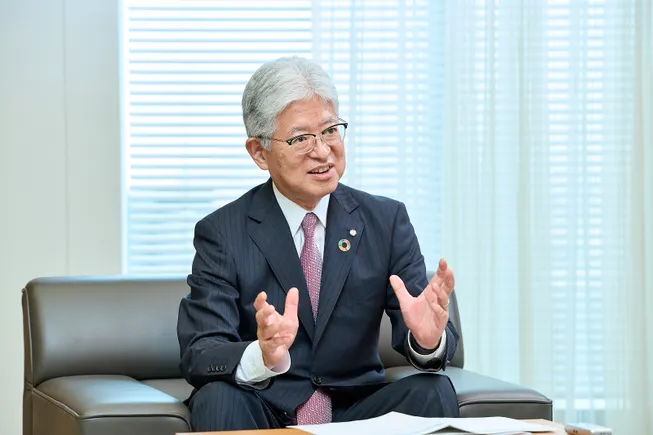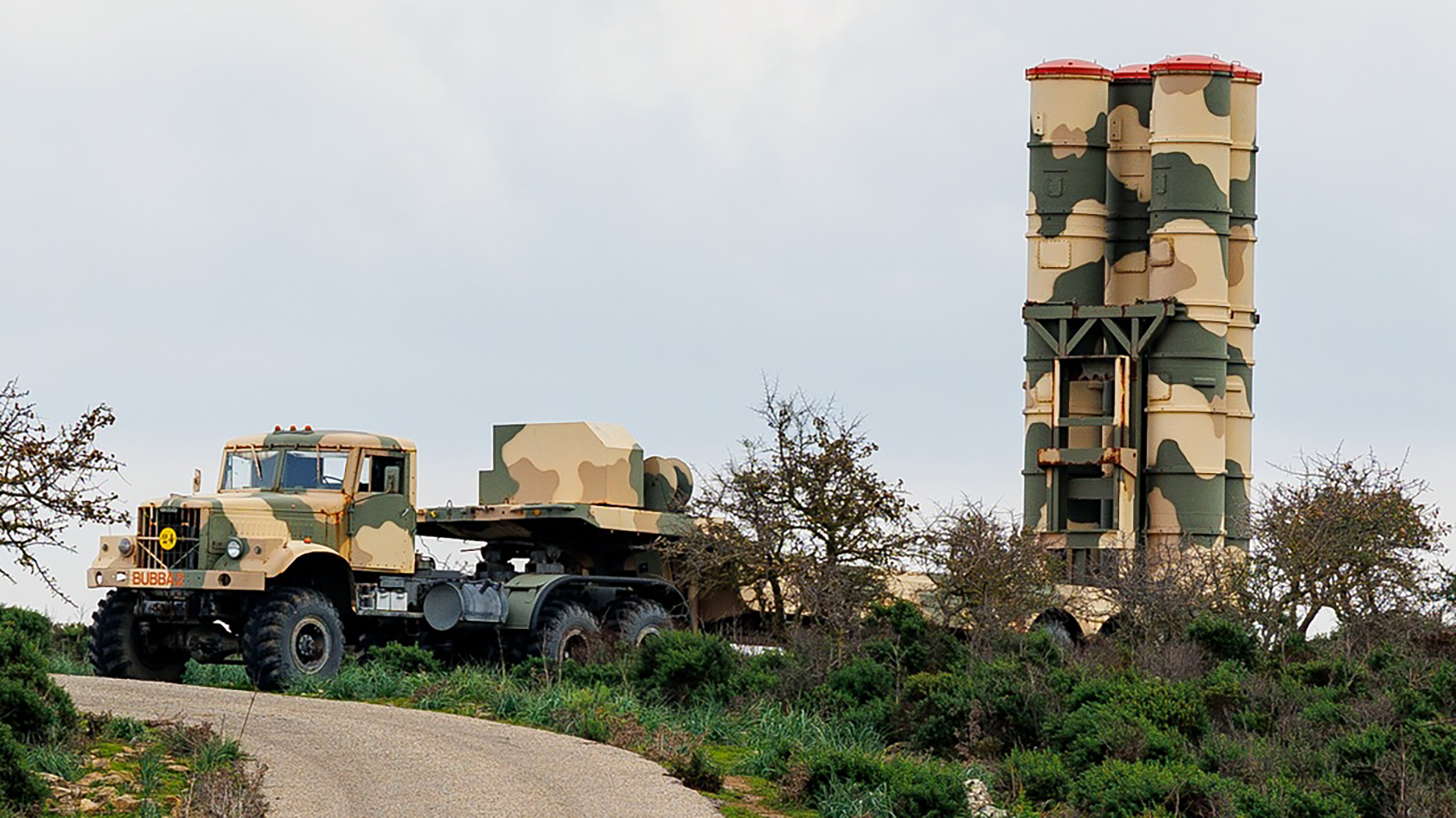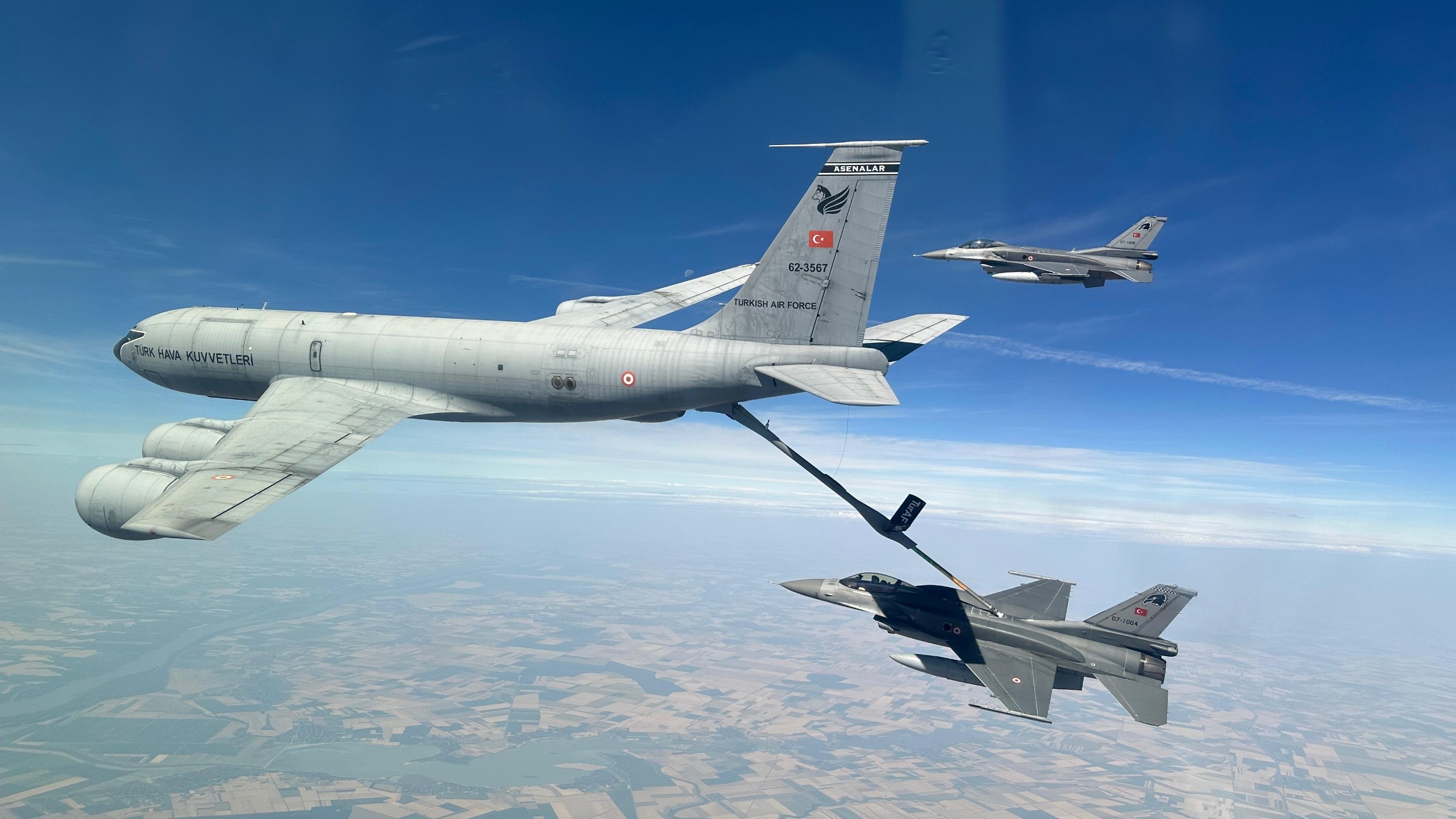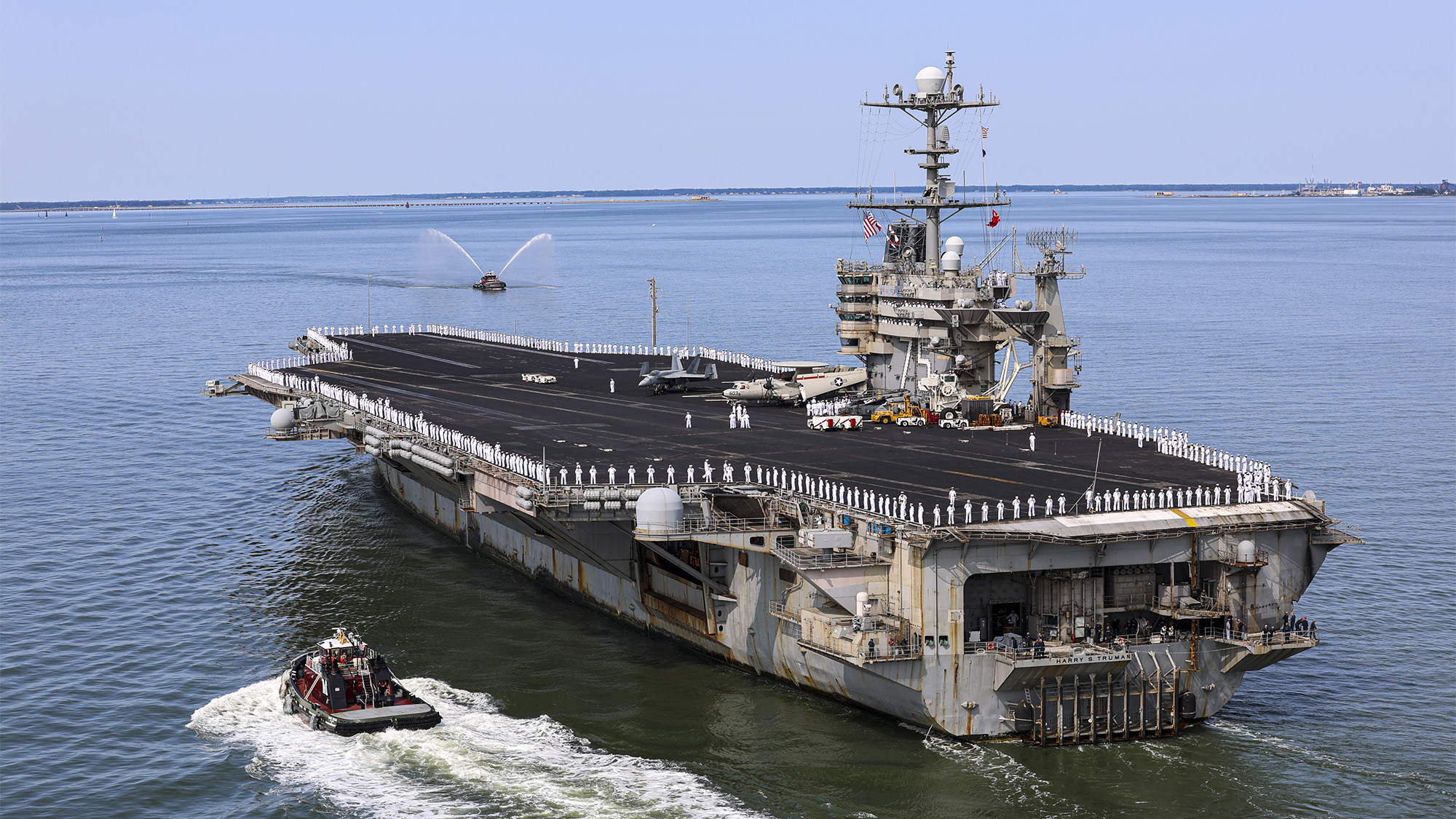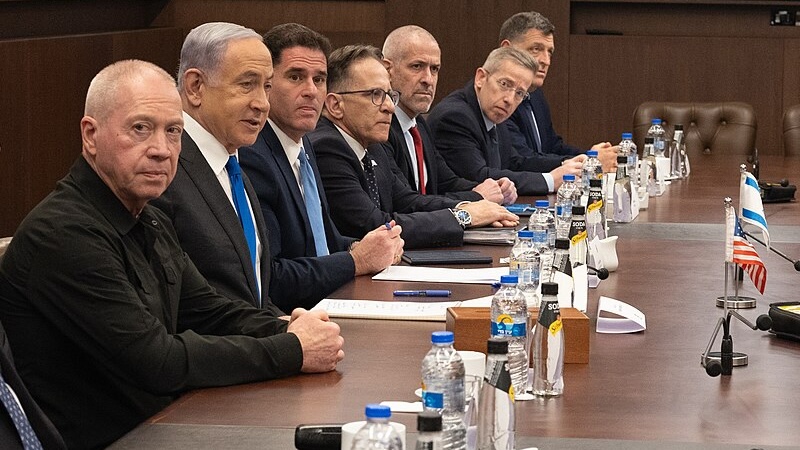Zelenskyy’s drone card: How Operation Spiderweb impacts Russia’s capabilities going forward
Ukraine’s creative use of cheap drones has resulted in a major asymmetrical victory, one which has left Moscow reeling — and potentially changed the world’s calculus about how small unmanned systems can be used.


A view of a Vampire and Kamikaze BC drone used by the 59th Brigade during tests before deployment to the frontline in Dnipro, Ukraine on May 21, 2025. (Photo by Jose Colon/Anadolu via Getty Images)
SINGAPORE — On Saturday, Ukraine’s Deputy Defense Minister Oleksandr Rozenko appeared on a panel at the annual Shangri-la Dialogue, where he made comments about how the Ukraine war is changing the manner in which nations conduct their acquisition — and how it has forced nations to rethink and streamline their R&D practices.
“This is a war of technology,” he said in reference to Ukraine’s war with Russia. “Whoever has the most and fastest scaling solutions will win.”
Little did the world know just how revealing that statement would turn out to be 24 hours later, when an orchestrated special operation 18 months in the making would lead to one of Ukraine’s greatest victories in the three-year-old conflict.
Under the nickname “Operation Spiderweb,” a flotilla of Ukrainian kamikaze drones had been smuggled into Russia and concealed under the roofs of prefabricated wooden cabins. These are popular among Russian well-to-do businessmen who are looking for what amounts to a turn-key hunting or fishing lodge that can be delivered on-demand.
Those cabins were then delivered by unsuspecting lorry drivers to locations near several of Russia’s main bomber bases. When the signal was given, the roofs of these wooden houses opened and all the drones underneath simultaneously struck at Russia’s strategic bomber fleet.
A contact who has been linked for many years to the Ukrainian Security Service (SBU) told Breaking Defense at the time of the attack that “around 40 Russian strategic bombers are on fire,” a number that would later be cited in press reports. Overall, Ukraine has claimed to have destroyed 34 percent of what the Russian Aerospace Forces (VKS) refer to as “long-range aviation,” or in plain English, bomber aircraft.
However, it’s unclear exactly what the final total may be, with some open-source efforts putting the number of planes impacted more in the realm of 10-20. Given the stealth nature of the attack and natural inclination from Kyiv and Moscow to cast the attacks in different lights, it is likely the public will never get a full, final accounting.
But what’s clear is that Ukraine’s creative use of cheap drones has resulted in a major asymmetrical victory, one which has left Moscow reeling — and potentially changed the world’s calculus about how small unmanned systems can be used.
The scale of Operation Spiderweb — as well as the scale of the deception required to carry it off — “goes beyond embarrassing,” said the contact in Ukraine. “It is the complete humiliation of the Russian special services that this attack took place — and none of them caught so much as a whiff of what was going on.”
What Was Hit
According to multiple reports from both inside and outside of Ukraine, the SBU drones struck at locations as far north as Murmansk, which is above the Arctic Circle, as well as deep into eastern Russia as the Amur region, which is over 5,000 miles from the Ukraine border.
Official statements from the Russian MoD allowed that the attacks had occurred in five regions of Russia — Murmansk, Irkutsk, Ivanovo, Ryazan and Amur. But the same official responses claimed that aircraft had only been damaged at the Murmansk and Irkutsk airbases, and that in the other targeted locations the Ukraine drones had been brought down — none of which corresponds to the evidence from video and satellite images seen since the June 1 attack.
Although not officially a division of the armed forces of Ukraine, the SBU been involved in some of the more high-profile special operations that have inflicted losses on the Russian military. And these — like Sunday’s attack — are losses that there is little to no chance for Russia’s military to recover from.
This is a strategic setback for Russia. A significant part — maybe even the majority — of its airworthy strategic bomber fleet (part of the nuclear triad) appears to have been destroyed today. https://t.co/xazObOCavZ pic.twitter.com/UtDCjb4bBX
— Yaroslav Trofimov (@yarotrof) June 1, 2025
Among other previous special ops, the SBU worked in conjunction with the Ukraine armed forces (ZSU) and Military Intelligence Service (GUR) to lure one of Russia’s most valuable air assets, the Beriev A-50 airborne command post, into a trap where air defense units brought the aircraft down.
The A-50s exist only in very small numbers within the Russian Aerospace Forces (VKS) — literally in single digits. And early reports are that at least one, maybe two, A-50s were taken out in Sunday’s attack, leading one military commentator, Sergei Kuzan, to tell Ukraine TV that, “today, the Russian Aerospace Forces lost not just two of their rarest aircraft, but truly two unicorns in the herd.”
Among other Russian planes reportedly hit are various models of the Tupolev design bureau — chronologically, the four counter rotating turbo-prop powered Tu-95 Bear aircraft, the Tu-22M3 Backfire, and the T-160 Blackjack.
The Tu-95 bombers have been particularly destructive in launching large-scale attacks on Ukrainian cities with the MKB Raduga Kh-101 air-launched cruise missile (ALCM). These missiles are fitted with an 880 lb warhead, and the Tu-95 can carry as many as eight of these weapons. These are the main ALCM launched against Ukraine — the last attack having been as recently as last week.
Taking out chunks of the bomber fleet was a clever way to compensate for the scale of air defense assets that Ukraine needed to defend its cities not being forthcoming from the West. “To date there are only six Patriot batteries in all of Ukraine,” said a retired US Army air defense officer who spoke to Breaking Defense. “That is not nearly enough.”
Tying these attacks in with strikes against the industrial facilities where the long-range missiles are produced will also help cut off the supply to the VKS. On May 29, an SBU drone attack (that was the largest ever until Spiderweb a few days later) hit the MKB Raduga plant in Dubna in the Moscow Region, one of the main Kh-101 manufacturing sites.
And of course, bombarding the bases where the planes launch from will have a direct result. If Ukraine continues to degrade Moscow’s bomber and missiles assets at this rate, the vaunted Russian VKS ability to conduct conventional strikes on its enemies — to say nothing of that leg of Moscow’s nuclear triad — will be significantly diminished.
Kateryna Bondar, a former Ukrainian official now with the DC-based Center for Strategic and International Studies, emphasized in an analysis that the planes hit simply cannot be replaced, whether due to no longer being in production (the Tu-95) or logistics.
“Because the original supply chain for components was spread across the Soviet Union, Russia now lacks the industrial base to quickly replenish such losses,” she wrote. “Even if some airframes could be repaired, replacing avionics, engines, or airframe parts may be prohibitively difficult. The long-term degradation of Russia’s long-range strike fleet, which forms part of its nuclear triad, represents a rare and costly strategic vulnerability.”
Locations of UAV strikes on Russian military sites by Ukraine's SBU today:
– Olenya air base, Murmansk region
– Belaya air base, Irkutsk region
– Ivanovo air base, Ivanovo region
– Dyagilevo air base, Ryazan region
– Severomorsk (Main naval base of the Russian Northern… pic.twitter.com/5PV8GKQ7QC— Alexander Kokcharov (@alex_kokcharov) June 1, 2025
Playing Cards
Outside of the military value, the strikes come at a time when Russia has stepped up its attacks on Ukraine while delaying action at peace talks. So there is a clear symbolic victory for the Ukrainian government in dealing such am embarrassing blow to the VKS.
In their now-famous rancorous Oval Office meeting this past February, US President Donald Trump castigated Ukraine President Volodymyr Zelenskyy about his position with Russia, telling him condescendingly “you don’t have the cards.”
As if on cue, on Sunday a tweet from the quarterly Business Ukraine journal, commented “it turns out Ukraine does have some cards after all. Today Zelensky played the King of Drones.” (A plethora of internet memes are now circulating showing the Ukrainian president with his SBU chief standing behind him holding playing cards with the image of a quadracopter drone printed on them.)
In contrast, Russian Sunday TV shows that usually recap the news of the week had no on-site reporting and only quoted official statements from the MoD and regional authorities. By Monday morning, mentions of the attack had largely disappeared from the Russian airwaves.
In the coming days, more details about this massive, coordinated attack will become known.
“Of course, not everything can be revealed at this moment,” Zelenskyy wrote on his Telegram channel after the attack, “but these are Ukrainian actions that will undoubtedly be in history books.”

































































